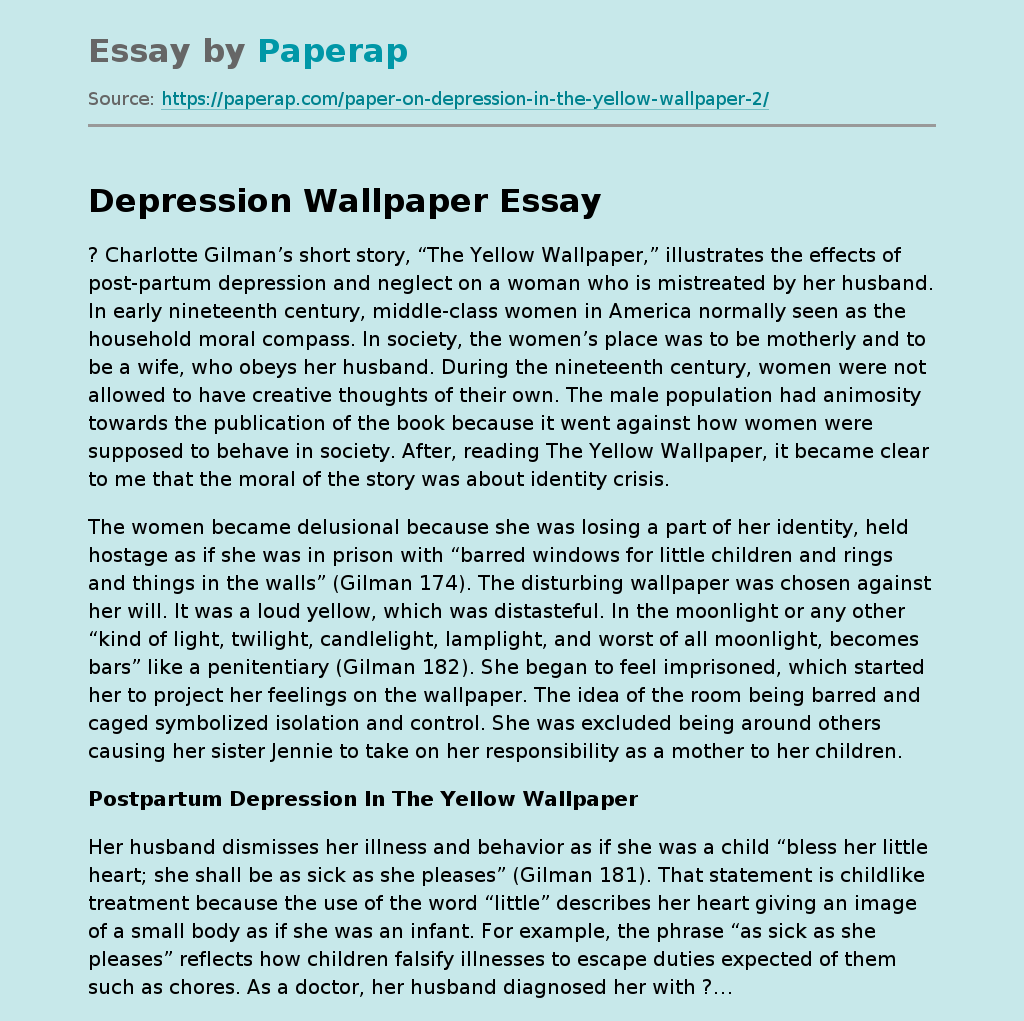Depression Wallpaper
? Charlotte Gilman’s short story, “The Yellow Wallpaper,” illustrates the effects of post-partum depression and neglect on a woman who is mistreated by her husband. In early nineteenth century, middle-class women in America normally seen as the household moral compass. In society, the women’s place was to be motherly and to be a wife, who obeys her husband. During the nineteenth century, women were not allowed to have creative thoughts of their own. The male population had animosity towards the publication of the book because it went against how women were supposed to behave in society.
After, reading The Yellow Wallpaper, it became clear to me that the moral of the story was about identity crisis.
The women became delusional because she was losing a part of her identity, held hostage as if she was in prison with “barred windows for little children and rings and things in the walls” (Gilman 174). The disturbing wallpaper was chosen against her will. It was a loud yellow, which was distasteful.
In the moonlight or any other “kind of light, twilight, candlelight, lamplight, and worst of all moonlight, becomes bars” like a penitentiary (Gilman 182). She began to feel imprisoned, which started her to project her feelings on the wallpaper. The idea of the room being barred and caged symbolized isolation and control. She was excluded being around others causing her sister Jennie to take on her responsibility as a mother to her children.
Postpartum Depression In The Yellow Wallpaper
Her husband dismisses her illness and behavior as if she was a child “bless her little heart; she shall be as sick as she pleases” (Gilman 181).
That statement is childlike treatment because the use of the word “little” describes her heart giving an image of a small body as if she was an infant. For example, the phrase “as sick as she pleases” reflects how children falsify illnesses to escape duties expected of them such as chores. As a doctor, her husband diagnosed her with ?…
Depression Wallpaper. (2019, Dec 05). Retrieved from https://paperap.com/paper-on-depression-in-the-yellow-wallpaper-2/

